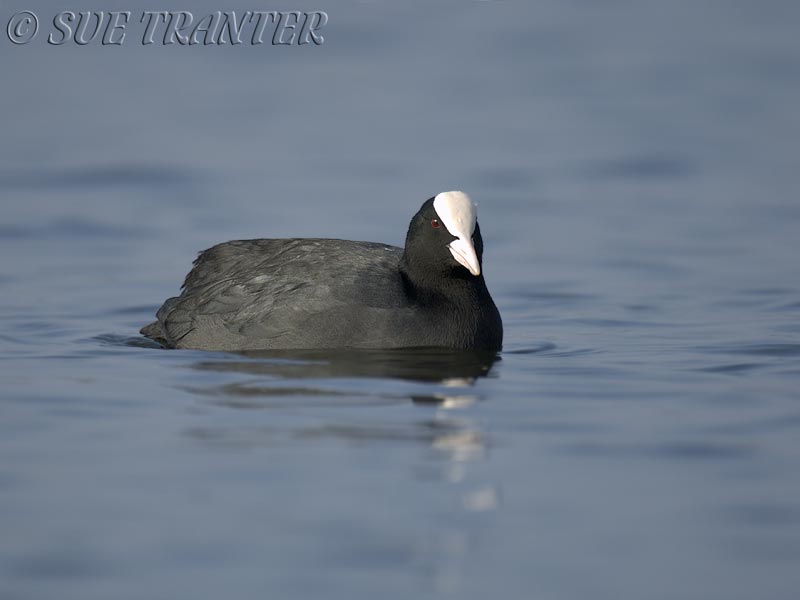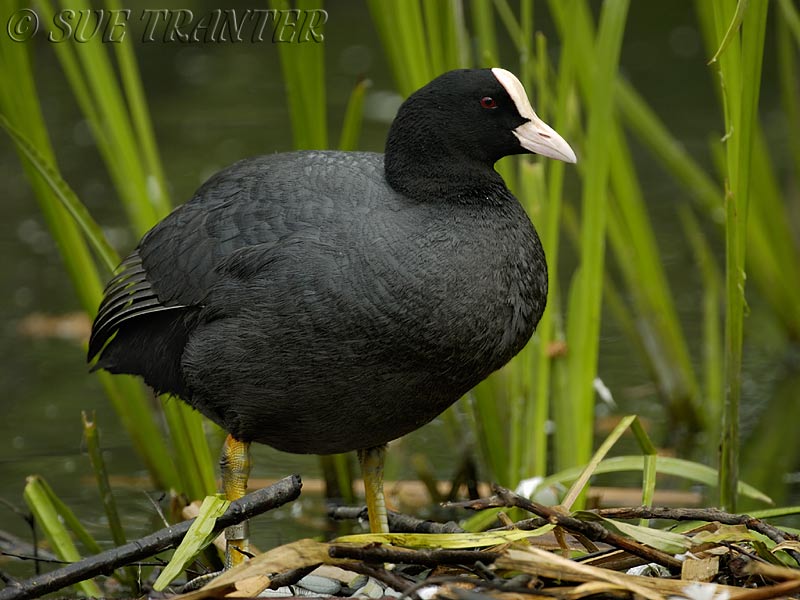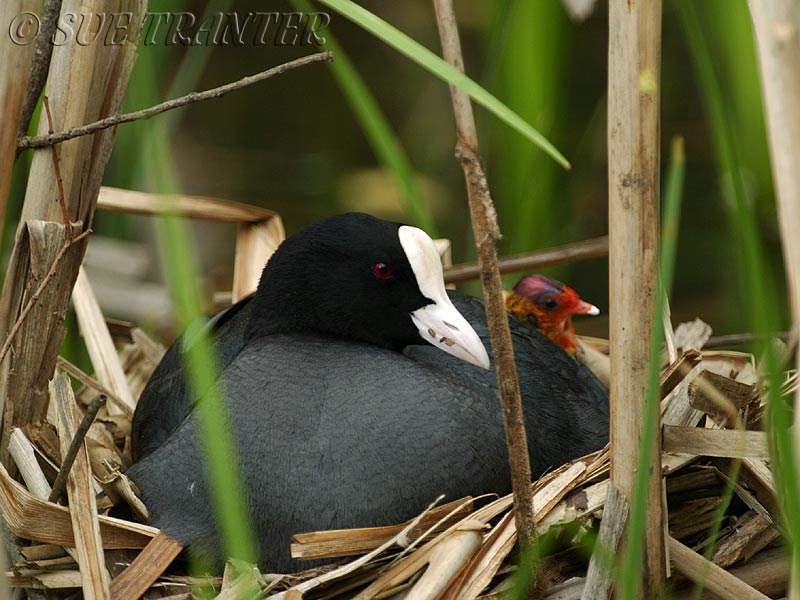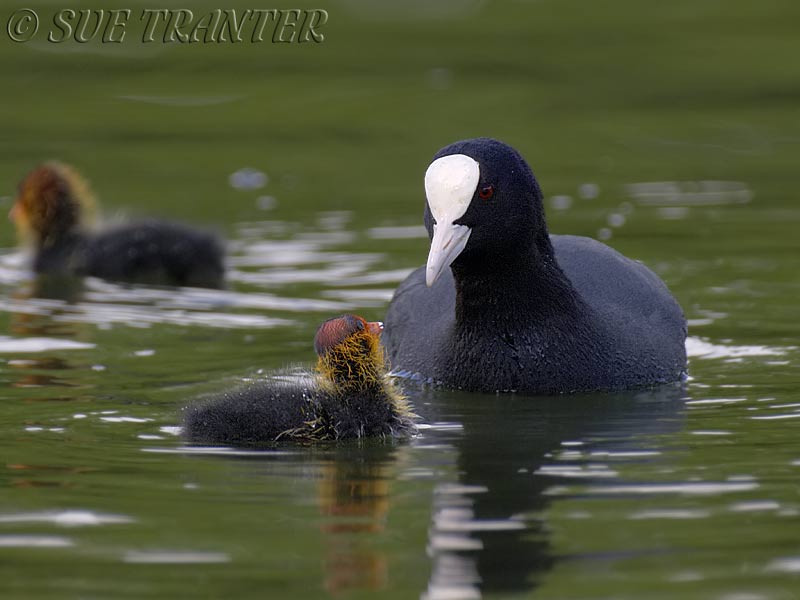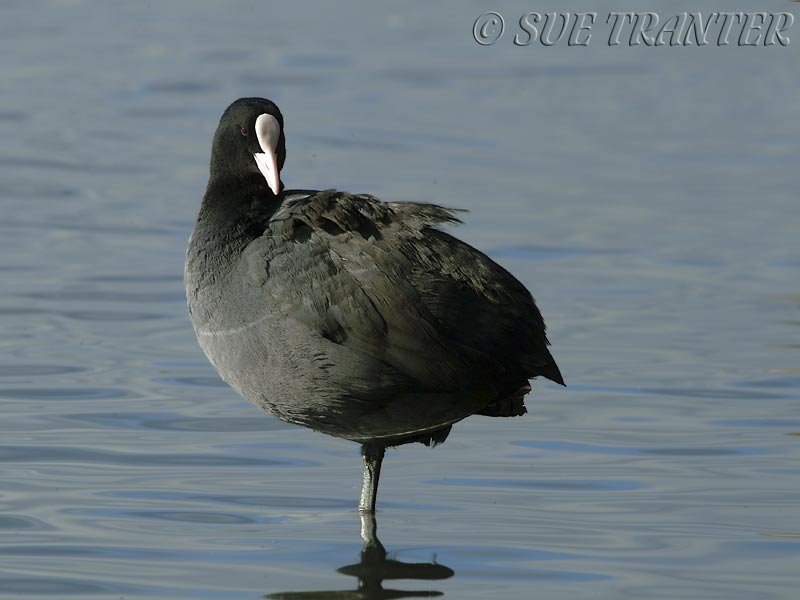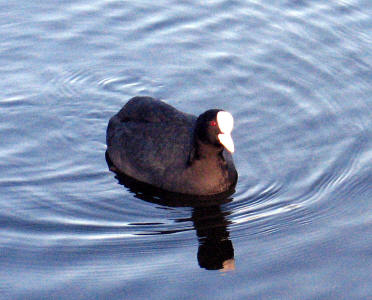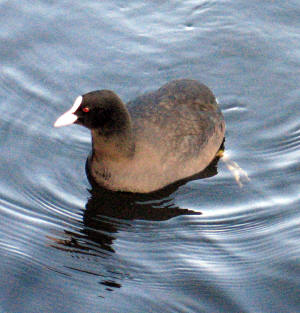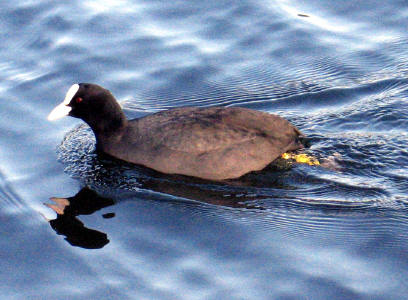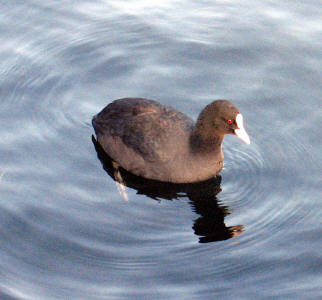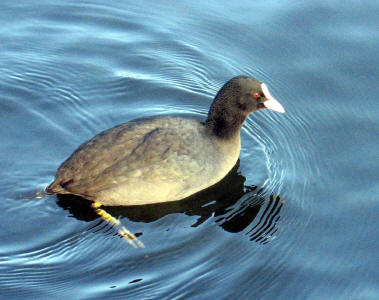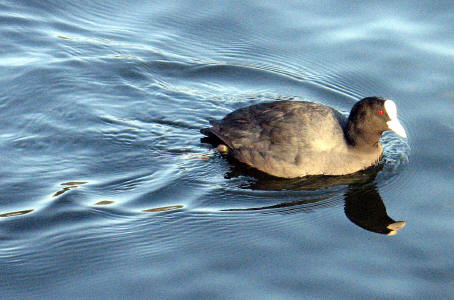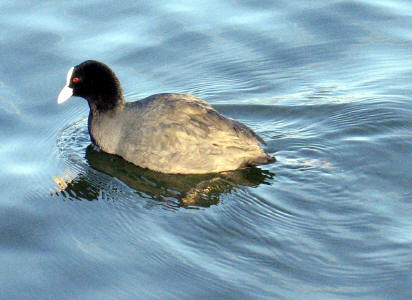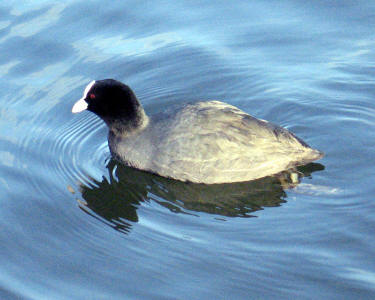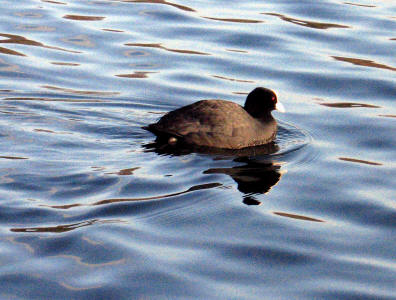Back To

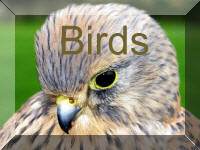
Back To


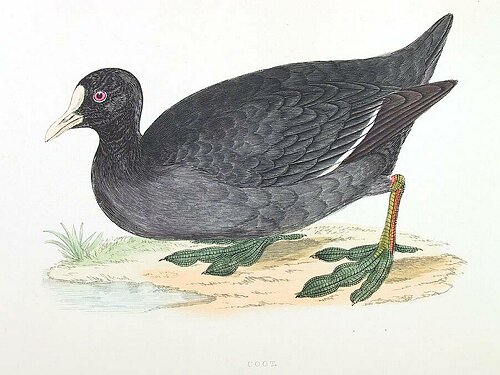
What does the Coot Look Like ?
Dumpy bird , with black bill with a white shield - Coots (males/females) have bare skin on their forehead that matches their shiny white bill. in contrast to their black plumage. When swimmining will nod the head rythmically , but not as musch as moorhen Males frequently fight with the white shield playing an important role in aggression display All-black and larger than its cousin, the moorhen, it has a distinctive white beak and 'shield' above the beak which earns it the title 'bald'. Its feet have distinctive lobed flaps of skin on the toes, which act instead of webs when swimming. Its feet flap noisily over the water before taking off and can be very aggressive towards others in the breeding season but outside that is seen in flocks , dives with a small flip.
How Big is It ?
Aprox 38 cm . 700 g , almot duck sized
Where does it live?
Open lakes pools and stagnant waters with lush reed vegetation through out Britain Mainly on freshwater lakes, gravel pits, reservoirs, rivers and town park lakes when deep enough. Sometimes seen offshore, especially in winter if freshwater areas are frozen.
What does it eat?
The Coots diet consit mainly of aquatic plant material such as reeds, shoots for which it dives to bring to the surface to eat and small aquatic invertebrates, snails and insect larvae.
What does it sound like?Click on this to here the Coote. A hard , "pix" , "dp" "pssi" the female has a barking "kiv"
What are its Breeding Habits ?April to July, 5 - 10 eggs , incubation 19 -22 days , young birds fledging at 40 - 50 days . Produces 1 - 3 broods per anum. The nest floats on thick vegetatio or hidden therein
When to see it
Similar speciesMoorhen
